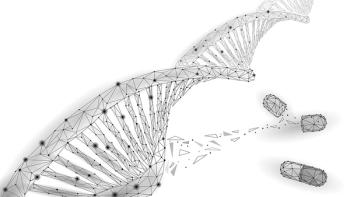
Novartis–Avidity Biosciences Deal Highlights Next-Gen RNA Manufacturing Potential
Key Takeaways
- Novartis's acquisition of Avidity Biosciences aims to strengthen its RNA therapeutics and neuroscience pipeline with a $12 billion investment.
- Avidity's AOC platform enables targeted RNA delivery to muscle tissue, addressing genetic neuromuscular diseases.
Novartis’ acquisition accelerates RNA drug innovation, expanding genetic therapy pipelines and reshaping biomanufacturing strategies for neuromuscular disease.
Novartis has entered into an agreement to acquire Avidity Biosciences, a San Diego-based biopharmaceutical company advancing a new class of RNA-based therapies that target muscle tissue. The transaction, valued at approximately $12 billion, is designed to strengthen Novartis’s late-stage neuroscience pipeline and enhance its position in the field of RNA therapeutics. The deal is expected to close in the first half of 2026, following the planned separation of Avidity’s earlystage precision cardiology programs into a new entity, SpinCo, according to an Oct. 26, 2025 company press release (1).
Avidity’s portfolio centers on antibody oligonucleotide conjugates (AOCs)—a platform that combines the targeting capability of monoclonal antibodies with the genetic precision of oligonucleotides. This technology allows for RNA delivery to muscle tissue, addressing previously intractable diseases caused by genetic mutations.
“Avidity’s...AOC platform for RNA therapeutics and its late-stage assets bolster our commitment to delivering innovative, targeted, and potentially first-in-class medicines to treat devastating, progressive neuromuscular diseases,” said Vas Narasimhan, CEO, Novartis, in the release (1). “The Avidity team has built robust programs with...delivery of RNA therapeutics to muscle tissue. We look forward to developing these programs to meaningfully change the trajectory of diseases for patients.”
What does this acquisition mean for biopharma R&D and RNA therapeutic manufacturing?
For the biopharmaceuticals arena, the acquisition reflects a broader push toward integrating RNA-based platforms into scalable, manufacturable modalities (2). Avidity’s AOC platform has drawn industry attention for its ability to deliver oligonucleotides with high tissue specificity—a challenge that has limited the therapeutic reach of RNA medicines. By joining forces with Novartis, Avidity’s programs will gain access to large-scale development infrastructure and expertise in genetic neuromuscular disease manufacturing (1).
The three late-stage assets from Avidity—targeting myotonic dystrophy type 1, facioscapulohumeral muscular dystrophy, and Duchenne muscular dystrophy—represent distinct opportunities to apply precision RNA targeting at commercial scale, the companies noted in the press release (1). Novartis anticipates multiple product launches before 2030, which the company expects will position RNA therapeutics as a future pillar of its manufacturing pipeline.
The acquisition is also expected to increase Novartis’s projected sales growth from 5% to 6% annually between 2024 and 2029, highlighting the commercial potential of these programs. Beyond revenue, the deal underscores the growing convergence of biologics and RNA modalities—technologies that demand innovation in formulation, delivery systems, and analytical quality control to ensure reproducibility and regulatory compliance.
How could this company combination shape the future of neuromuscular disease treatment?
The combination of Novartis’s neuroscience expertise and Avidity’s delivery platform may accelerate the development of first-in-class therapies that address the genetic basis of neuromuscular disorders. For biomanufacturers and biopharma developers, the integration also offers a case study in how next-generation RNA modalities are being adapted for late-stage development—requiring specialized process design, control strategies, and analytical methods.
The acquisition extends Novartis’s established role in spinal muscular atrophy into broader neuromuscular domains, potentially setting new standards for genetic medicine manufacturing. For the industry, it signals increasing confidence in RNA platforms that can move beyond hepatic delivery and into complex tissues such as muscle, an area long considered difficult to reach with precision therapies (3).
If successful, Novartis’s integration of Avidity’s AOC technology could influence how RNA therapies are designed, scaled, and regulated, which could pave the way for a new generation of genetic medicines that combine biologic precision with manufacturable reliability (4).
References
1. Novartis.
2. Jones, C. H.; Androsavich, J. R.; So, N.; et al. Breaking the Mold with RNA—A "RNAissance" of Life Science. npj Genomic Med.2024, 9(1), 2. DOI:
3. Bian, W.; Bursac, N. Tissue Engineering of Functional Skeletal Muscle: Challenges and Recent Advances. IEEE Eng Med Biol Mag.2008, 27(5), 109–113. DOI:
4. AInvest News Editorial Team.
Newsletter
Stay at the forefront of biopharmaceutical innovation—subscribe to BioPharm International for expert insights on drug development, manufacturing, compliance, and more.





